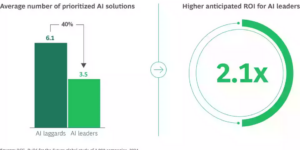Global reinsurance capital fell 6 percent to $590 billion for the first quarter of 2020, Aon reported in its June/July Reinsurance Market Outlook report this week
The report, which also looks at changes in reinsurance demand levels, hot-button reinsurance wording themes and primary insurance pricing changes, revealed dips in both the traditional equity capital and alternative capital components of the global reinsurance capital figure.
Traditional equity capital dropped 6 percent to $499 billion at Mar. 31, 2020, compared to $530 billion as of Dec. 31, 2019, Aon said. The drop reflected the impact of COVID-19 on both sides of the balance, the report said, noting that while partial recovery of the asset side is expected for second-quarter 2020, pandemic-related claims are expected to ramp up.
The report also notes that incumbents raised new capital in the second quarter to counteract COVID-19 impacts and to position themselves for improving market opportunities, with reports of new company formations also increasing. (See related article, “Is a ‘Class of 2020’ Emerging?“)
For the alternative capital component, assets under management fell 4 percent to $91 billion at Mar. 31, 2020, compared to $95 billion at year-end. The report also notes that $15 billion of collateral is believed to be trapped as a result of major losses, including COVID-19.
(Editor’s Note: Aon’s capital tally is higher than those presented by other reinsurance brokers, including Guy Carpenter, which estimated $346 billion of traditional capital and $92 billion of alternative capital at year-end 2019, for a total of $438 billion vs. $625 billion for Aon. In the past, Aon executives have explained its total counts “every aspect that’s devoted to taking catastrophe risk for insurance companies,” including “all the capital in platforms where a carrier that writes both insurance and reinsurance,” explaining part of the difference. At the time, Aon said its tally also included government funds that provide reinsurance-like capital)
While there have been some new inflows of alternative capital from “established players with strong track records,” significant losses in recent years have tested the appetites of some supporters of sidecars and collateralized reinsurance transactions, with concerns about loss creep, climate change and model credibility driven an overall drop in assets under management. The report also note that the concept of a lack of correlation between insurance catastrophe losses and broader capital markets may be challenges if additional collateral is trapped as a result of COVID-19.
While sidecars and collateralize reinsurance volumes may be dropping, the report noted that there is still strong interest in property-catastrophe bonds and the industry loss warranty market. Aon estimates that $6.5 billion of cat bon limit was placed in the first half of 2020, essentially matching maturities.
Renewals at Midyear
Although the report doesn’t address reinsurance price changes experienced at the June/July renewals, it does note that COVID-19 “exacerbated many of the pressures” in the market. With COVID impacts in the mix, a forecast that Aon made earlier this year, indicating that a “modest but progressive” tightening of reinsurance capacity would materialize, has not only taken hold but have been accelerated, the Aon report said.
Still, the report notes that capacity was generally available for June and July renewals, although outcomes may have been different among cedents depending on timing, structure, and peak zone capacity constraints. And on the pricing side, specifically for Florida renewals, rate increases for Florida peak zone peril coverage turned out to be less onerous for cedents later in the renewal season. According to the report, the decision by the Florida Hurricane Catastrophe Fund to non-renew $920 million of reinsurance limit in the private market, and the action by Citizens Property Insurance Corp. in opting not to withdraw a $200 million tranche from its Everglades Re II Ltd. catastrophe bond, helped to mitigate some rate increases.
Still, fewer reinsurers sought to grow line sizes in Florida during mid-year 2020 renewals. “Even with the reduction in demand from the FHCF and Citizens, lines were more difficult to place,” Aon reported. Reinsurers, including some re-entrants to the market, had more appetite for upper layers of programs.
Demand remained relatively stable, Aon added, noting that while these governmental-related covers were pulled from the market offset, some insurers elected to secure additional capital to reduce volatility heading into a predicted above-average hurricane season.
“Despite different market dynamics than in many past renewals, insurers were able to secure needed limit in the face of already reported COVID-19 related claims, future uncertainty regarding macroeconomic trends and premium volume impact from COVID-19 for the longer term,” Aon reported.
The section of the report describing the demand for reinsurance also summarizes hot topics for mid-year renewals, including communicable disease exclusions for property covers. The LMA 5503 wording from the Lloyd’s Market Association gained the most traction although some insurers elected to write their own language, the report says.
In casualty, the first hot topic listed is social inflation. Commenting on social inflation trends, the report notes that employers liability “has emerged as a potential liability stream for COVID-19 payouts” that is being watched closely by insurers. Demand for casualty reinsurance remains strong given the potential liability of large verdicts overall, the report says.





















 AM Best: Tariff Uncertainty Could Lead to Credit Rating Changes for Insurers
AM Best: Tariff Uncertainty Could Lead to Credit Rating Changes for Insurers  The Workplace Is Changing; So Are the Risks for Employment Discrimination Claims
The Workplace Is Changing; So Are the Risks for Employment Discrimination Claims  Is State Farm General Too Big to Fail? Calif. Rate Hearing Concludes
Is State Farm General Too Big to Fail? Calif. Rate Hearing Concludes  Is State Farm General a Sinking Ship? California Emergency Rate Request Dropped to 17%
Is State Farm General a Sinking Ship? California Emergency Rate Request Dropped to 17% 



